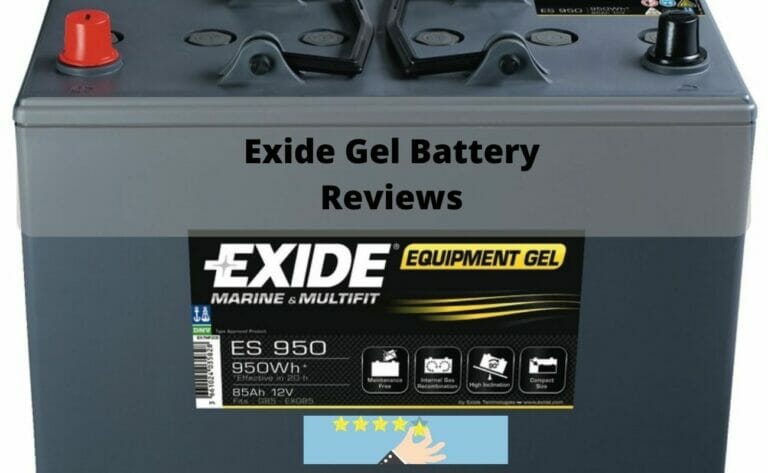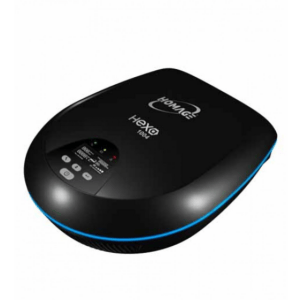Gel batteries are becoming more and more popular for UPS systems. They are different from the flooded lead acid batteries. The regular flooded Lead acid batteries require top up with distilled water at least once in three months.
People often fail to maintain their inverter batteries which damages the cells and results in battery failure and low back up problems.
To tackle this issue, Exide has introduced innovative, low maintenance gel batteries. These batteries do not require distilled water to top them up throughout their lifetime.
Exide gel batteries are more expensive than the flooded lead acid batteries as they are more innovative and do not require much maintenance.
We have brought to you Exide gel battery review to help you understand the pros and cons of these batteries so that you can make a better decision buying them.
Table of Contents
Exide Gel Battery Review
Gel batteries contain gelified electrolyte which is a gel-like substance formed by mixing fumed silica with sulfuric acid. It is a standstill and static mass. Here are a few things you should know about Exide Gel Battery before buying one.
Things You Should Know When Buying Exide Gel Battery
- Exide gel battery has a very low rate of self-discharge as compared to the Lead acid battery.
- Gel battery does not need maintenance, meaning you don’t need to top it up with distilled water.
- You can place an Exide gel battery in any position. There are no restrictions to put it in an upright position. Also, you can put it in any narrow space.
- One of the biggest problem with Exide gel battery is its premature battery failure if it is subjected to;
- Quick charging with high voltage current
- Heavy discharged
- Rough handling
This type of batteries should be handled with care and charged very carefully as Exide gel battery is prone to damage and failure if charged in an improper way unlike Classic Exide IT500 Flooded Lead acid battery.
- The gel-like mass used in the battery is highly fragile and can break when the battery is connected to high amperage.
- The warranty of Exide gel batteries is similar to Classic Exide Lead acid batteries.
Best Exide Gel Batteries
| Model | Capacity | Warranty |
| Exide IT350 Gel | 100 Ah | 48 Months |
| Exide IT450 GEL | 135 Ah | 48 Months |
| Exide IT500 GEL | 150 Ah | 48 Months |
Exide gel batteries are completely maintenance free. They are newly launched batteries so it might be difficult to find one in Pakistan.
They are good looking, slim fit batteries with 48 months free replacement warranty from exide. It has superior deep cycle life when compared to AGM.
They give the lowest cost-per-cycle and cost-per-month. They have greater shelf life as compared to wet cell batteries.
How Gel Batteries are Made?
These batteries use a one way, pressure-relief valve system and immobilized electrolyte to achieve this amazing technology. This electrolyte is formed by mixing diluted Sulphuric acid with silicon dioxide.
How Gel Batteries Work?
Fused gelled electrolyte in the gel batteries works as an electrolytic medium for ion movement as well as to provide numerous small crevices needed for recombination reaction.
Positive plates produce oxygen ions that are transported to negative plates through crevices where they are absorbed. This outnumbers the hydrogen ions created at negative plates.
H2O is produced which remains within the battery therefore it doesn’t need watering. Also, the battery should never be opened as it will expose the battery to excess oxygen from air.
What are Exide Gel Batteries?
- Exide gel batteries have high quality maintenance-free builds. Their electrolytes do not need maintenance unlike deep cycle flooded batteries that need frequent checking and adjustment of electrolyte level.
- They have a high pressure venting system which ensures high efficiency oxygen recombination.
- As these batteries don’t have liquid type electrolyte, they do not leak even if tipped on their sides.
- They have a high level of tolerance against damage from deep discharge and have greater shelf life and lower self-discharge rate than the regular batteries.
- They come with enhanced recharging efficiency and do not require immediate recharge after discharging.
- They have the best combination of cycling and deep cycle services.
- They have an efficient heat dissipation system that prevents thermal runaway.

Hamza Subhan is a digital content director at Price In Pakistan. He lives in Lahore. He keeps an eye on every new item in the markets of Pakistan and his hand on the pulse of Pakistani people to provide them with the information that they need about the product. He has a bachelor’s degree in Electrical engineering from UET Lahore. His keen passion for the latest technology, gadgets, and knowledge about electrical appliances led him to launch Price In Pakistan. He is the main hand behind the articles related to electrical home appliances and gadgets. When he is not looking out for the new technology and writing about it, he is playing guitar and singing for his friends.






